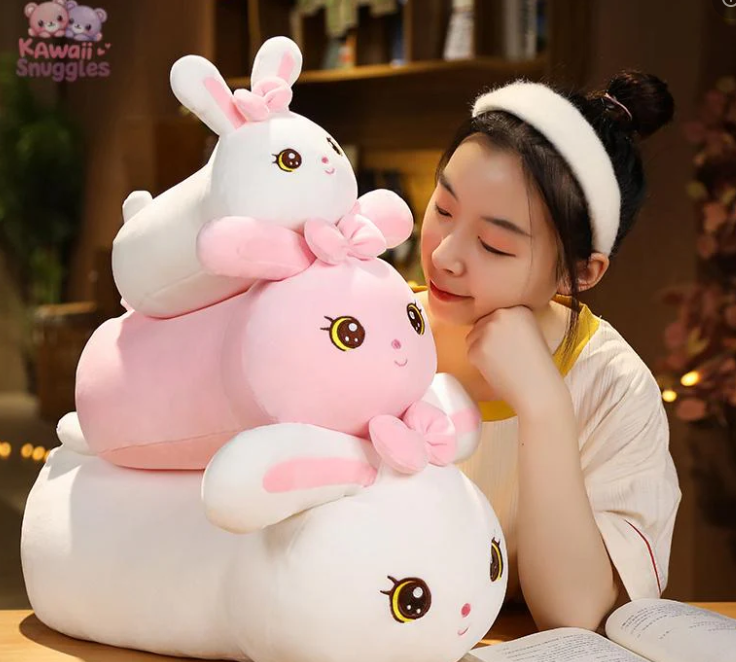entertainment

June 05,2025 • 4 min read
The Endearing Charm of Plush Toys Animals: Why They Remain Timeless Favorites

From nurseries to dorm rooms, plush toys animals have long held a special place in the hearts of people of all ages. These soft, cuddly companions do more than decorate shelves — they carry memories, offer comfort, and spark creativity in ways that few other items can. Whether shaped like a classic teddy bear or a rare jungle creature, every plush animal is more than a toy; it’s a beloved friend.
In this article, we’ll explore the continued popularity of plush toys animals, why they’re essential for children’s development, how they’ve evolved with trends, and what to look for when choosing the perfect plush animal for yourself or a loved one.
The Timeless Appeal of Plush Toys Animals
Plush toys animals are soft fabric-stuffed animals that can resemble real-world creatures, fantasy beasts, or cute hybrids. Their universal appeal can be attributed to:
-
Comfort and security: Especially for young children, mythical stuffed animals can serve as a transitional object that provides emotional stability.
-
Universal themes: From lions and elephants to cats and pandas, plush toys animals reflect creatures that children are naturally curious about.
-
Gift potential: Plush animals make thoughtful gifts for birthdays, holidays, and even adult occasions like graduations or romantic surprises.
They offer a sense of warmth and familiarity, which is why they’re often one of the first toys a child receives.
Why Plush Animals Are Essential for Early Development
Beyond their cuteness, plush animals serve practical roles in childhood development. Here’s how:
Emotional bonding
Children tend to personify their plush animals, treating them as friends or family members. This builds empathy, nurtures emotional expression, and fosters responsibility.
Cognitive growth
Plush toys animals inspire imaginative play. Creating stories and assigning personalities to plush animals stimulates language development and problem-solving skills.
Routine building
Many children form routines with their plush companions — feeding them, putting them to sleep, or taking them on adventures. These rituals help build structure and responsibility.
Sensory experience
The soft texture, weight, and even scent of a plush animal help soothe and regulate sensory input, especially for children with sensory processing challenges.
The Rise of Collectible Plush Animals
Today, plush animals aren’t just for kids. Many teens and adults collect them for nostalgia, decoration, or emotional comfort. Influenced by pop culture, social media trends, and brand collaborations, plush animals now come in series and limited-edition collections.
Some collectors seek plush animals based on:
-
Themes (space, food, seasons)
-
Color palettes (pastel, monochrome, neon)
-
Personality types (sleepy, adventurous, shy)
This evolution has turned plush toys animals into both a lifestyle statement and a therapeutic tool for people of all ages.
Plush Animal Safety and Quality Tips
When selecting a plush toy — especially for infants or toddlers — safety and quality are key. Here’s what to look for:
-
Hypoallergenic materials: Choose fabric that won’t irritate sensitive skin.
-
Secure stitching: Prevents stuffing or small pieces from falling out.
-
No removable parts: Avoid button eyes or accessories for babies and toddlers.
-
Washability: Machine-washable plush animals are ideal for messy situations.
Also, always check product labels and age recommendations before purchasing.
Plush Animals as Educational Tools
Many plush toys animals are now created with educational intent. They help children learn:
-
Animal names and sounds
-
Habitats and ecosystems
-
Conservation awareness
For example, a plush polar bear can teach kids about Arctic environments and climate change, while a plush frog may encourage discussions around amphibians and the water cycle.
Educators and parents often use plush animals as storytelling props or classroom mascots to enhance learning experiences.
The Emotional Connection: Why We Keep Plush Animals for Life
It’s not unusual for someone to keep a beloved plush animal for decades. Even adults who no longer “play” with their plushies often keep them for sentimental reasons. This long-term attachment stems from:
-
Childhood memories
-
Emotional comfort during tough times
-
Symbols of friendship, love, or personal milestones
Plush animals often become silent witnesses to life’s journey — offering comfort without words and joy without expectations.
Conclusion
Plush toys animals are far more than simple stuffed fabric — they’re emotional anchors, learning tools, and cultural icons. Whether it’s a plush animal from a safari adventure set or a gentle, floppy-eared bunny from childhood, these soft friends hold a permanent spot in human hearts.
bisma khan Details
User Profile
- Full name
- bisma khan
- Email address
- bismakhan3789@gmail.com
- Join Date
- 2025-06-05
- State
- City
- Pincode
- Address
- Follow us on Facebook
- Follow us on Twitter
- Website Name
- Bio